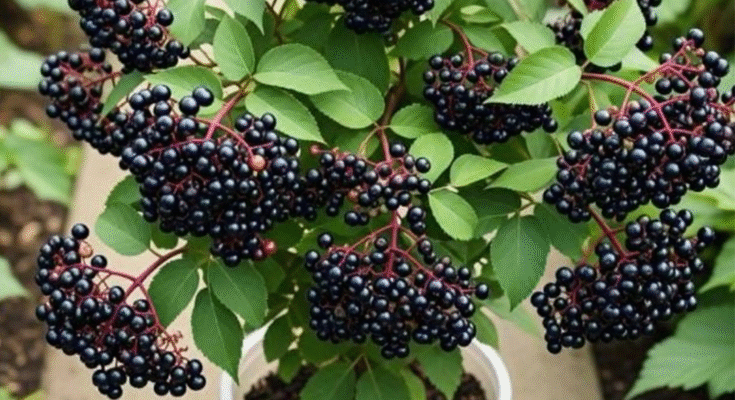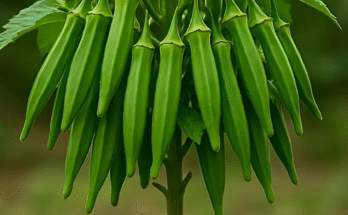How to Grow Blackberries Using Cutting Method
Blackberries are one of the most rewarding fruits to grow at home. They are delicious, packed with vitamins, and can be harvested straight from your garden for years. If you want to multiply your blackberry plants or start a new patch, the cutting method is one of the easiest and most reliable ways. This technique allows gardeners to clone an existing healthy plant, ensuring that the new plants carry all the desirable traits of the parent plant. In this guide, we will explore in detail how to grow blackberries using the cutting method—from choosing the right parent plant to rooting and caring for your new plants.
1. Understanding the Cutting Method
The cutting method involves taking a portion of a healthy blackberry stem and encouraging it to grow new roots. Unlike planting seeds, which can produce variable results, cuttings are clones of the parent plant. This means your new blackberry plants will have the same flavor, fruit size, and growth habits as the original bush.
Blackberry plants can be propagated using softwood cuttings or hardwood cuttings:
- Softwood cuttings are taken from the tender new growth in late spring or early summer. They root quickly and are ideal for fast propagation.
- Hardwood cuttings are taken from mature, dormant canes in late fall or winter. They are stronger and more resistant to harsh weather.
Both methods work well, but most home gardeners prefer softwood cuttings because they establish faster.
2. Selecting a Healthy Parent Plant
The first and most important step is to select a strong and disease-free parent plant. Choose a blackberry bush that has:
- Produced large, sweet berries.
- Shown vigorous growth.
- No signs of pest damage or disease.
Make sure the plant has had good soil drainage and sufficient sunlight. Avoid taking cuttings from plants that look weak, discolored, or have shriveled stems, as this can affect the success rate of propagation.
3. Preparing the Cuttings
Once you have identified a healthy plant, it’s time to prepare your cuttings. Follow these steps carefully:
- Choose the right stem: Select a stem that is about the thickness of a pencil and not flowering or fruiting. It should be green and flexible (for softwood cuttings) or firm and brown (for hardwood cuttings).
- Cut the stem: Using clean, sharp pruning shears, cut a section that is about 6 to 8 inches long.
- Make a clean cut: The bottom cut should be just below a node (where leaves grow), and the top cut should be about an inch above a node.
- Remove lower leaves: Strip off any leaves from the bottom half of the cutting, leaving two or three leaves at the top.
- Optional: Dip the cut end in rooting hormone powder to encourage faster root development and prevent rot.
Always use sterile tools to avoid introducing disease to your cuttings.
4. Preparing the Growing Medium
Blackberries grow best in well-draining soil that retains some moisture. For rooting cuttings, use a light, sterile mix. A good combination is:
- 1 part peat moss
- 1 part perlite or coarse sand
Fill small pots or seed trays with this mix and moisten it lightly with water. The medium should be damp but not soggy—excess water can cause the cuttings to rot.
5. Planting the Cuttings
Now you’re ready to plant the prepared cuttings:
- Use a pencil or stick to make a small hole in the soil.
- Insert the cutting about halfway into the soil, ensuring that at least one or two nodes are buried.
- Firm the soil gently around the base of the cutting to remove air pockets.
- Mist the leaves lightly with water.
For best results, place a clear plastic cover or plastic bag over the pot to create a mini greenhouse effect. This helps maintain humidity and warmth, which are crucial for root growth.
6. Creating the Right Growing Conditions
Blackberry cuttings root best under warm and humid conditions. Keep the temperature around 21–26°C (70–80°F) and place the pots in a bright location with indirect sunlight.
- Avoid direct sunlight at this stage, as it can overheat the cuttings.
- Mist the leaves daily to keep humidity high.
- Check the soil regularly to ensure it stays slightly moist but not waterlogged.
Within 3 to 4 weeks, softwood cuttings will begin to develop roots. Hardwood cuttings may take longer, around 6 to 8 weeks.
7. Transplanting the Rooted Cuttings
When the cuttings have developed strong roots—typically visible through drainage holes or by gently tugging the stem—it’s time to transplant them.
- Prepare garden beds or large pots filled with rich, well-drained soil.
- Space each plant about 3 to 4 feet apart to allow room for spreading canes.
- Plant the rooted cutting deep enough to cover the roots and lower stem.
- Water thoroughly after planting.
In the first few weeks, protect young plants from harsh sun and wind until they establish fully.
8. Caring for Young Blackberry Plants
To ensure healthy growth and abundant fruiting, continue providing proper care:
- Watering: Keep the soil evenly moist, especially during dry periods.
- Mulching: Apply organic mulch around the base to retain moisture and suppress weeds.
- Fertilizing: After a month, apply a balanced fertilizer or compost to encourage growth.
- Training: As the canes grow, support them using a trellis or wire to keep the plants upright and improve air circulation.
During the first year, focus on strong vegetative growth. Most cuttings will start producing fruit in the second year after planting.
9. Protecting Against Pests and Diseases
Blackberries can attract pests such as aphids, spider mites, and cane borers. Regularly inspect the leaves and stems. Use natural pest control methods like neem oil or insecticidal soap if needed.
Avoid waterlogging to prevent root rot, and prune away dead or diseased canes promptly.
10. Harvesting Your Blackberries
When your plants mature, you’ll be rewarded with sweet, juicy berries. Blackberries are ready to harvest when they turn deep black and come off the stem easily. Harvest regularly to encourage more fruit production.
Conclusion
Growing blackberries using the cutting method is simple, rewarding, and cost-effective. With patience and proper care, you can create a thriving blackberry patch that yields delicious fruit year after year. By following these steps—selecting healthy parent plants, preparing your cuttings, maintaining humidity, and transplanting carefully—you’ll soon enjoy a garden full of lush blackberry vines ready to produce their rich, flavorful bounty.



